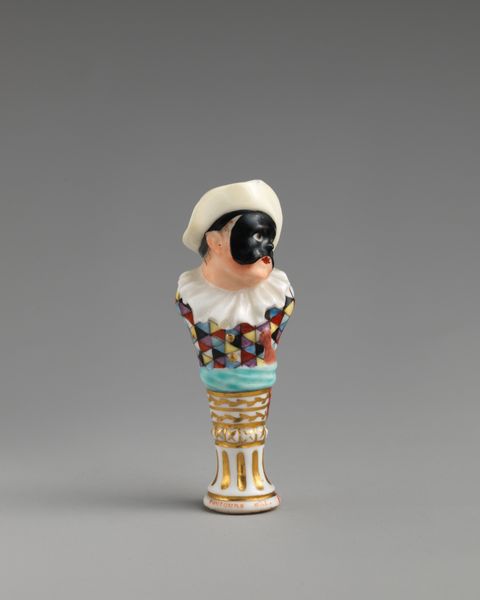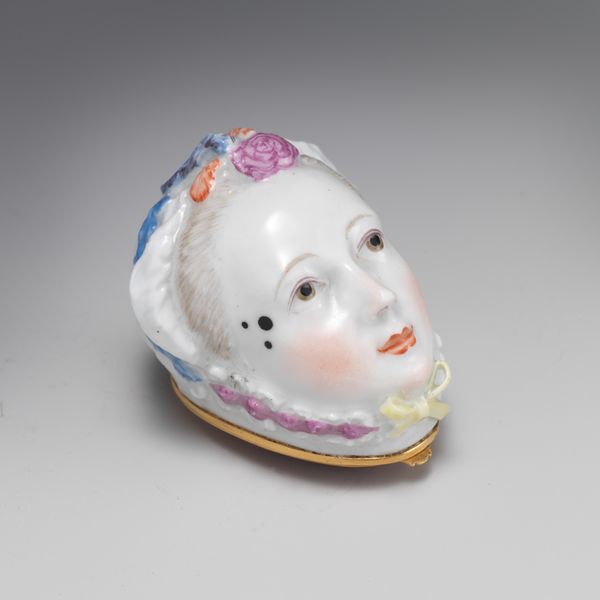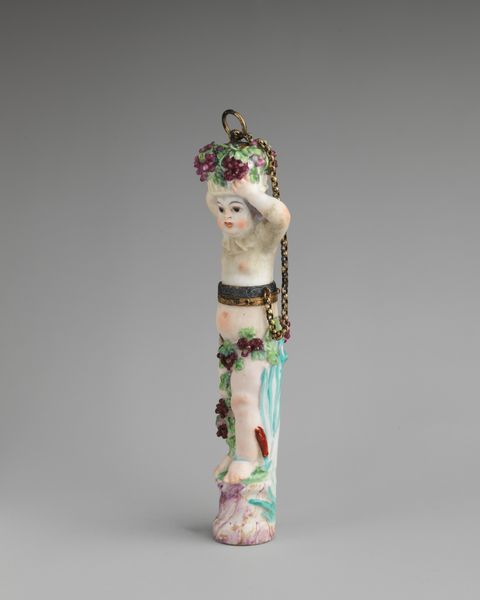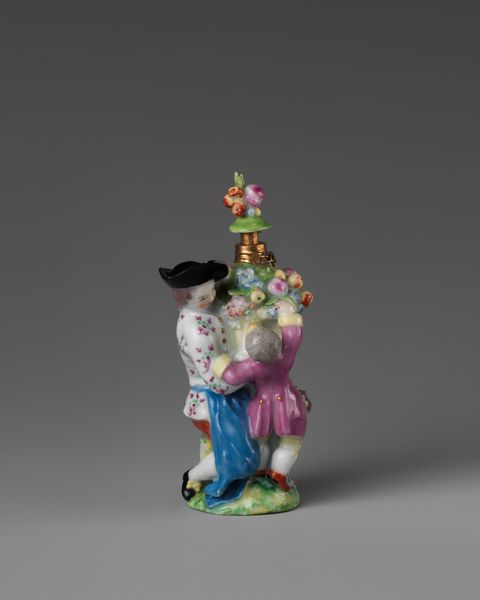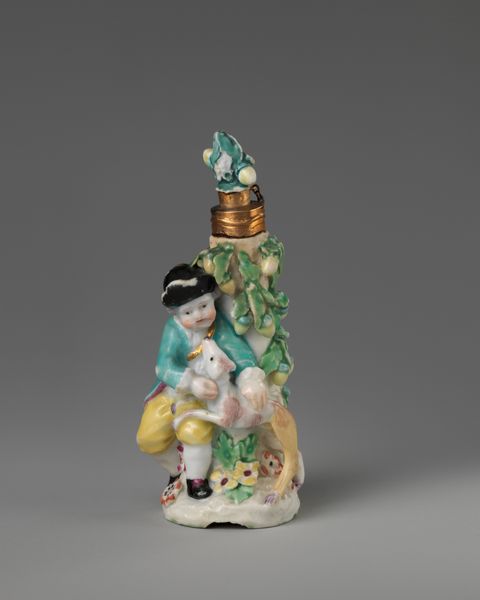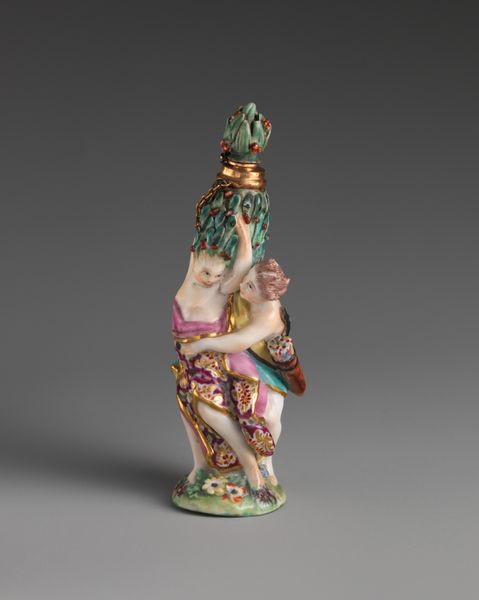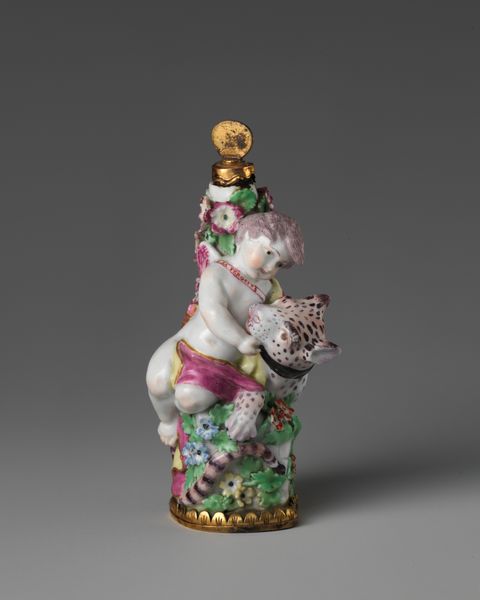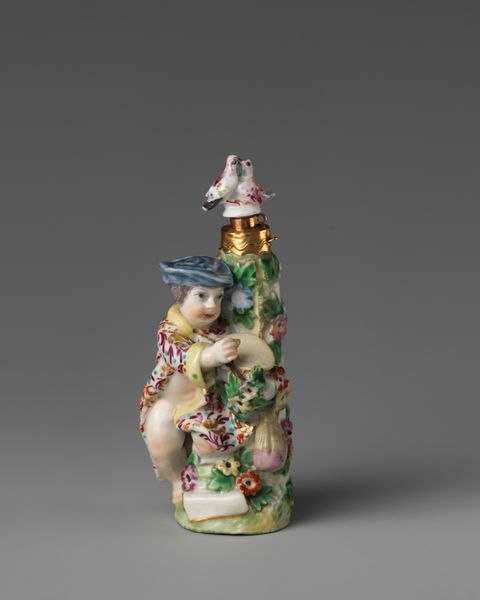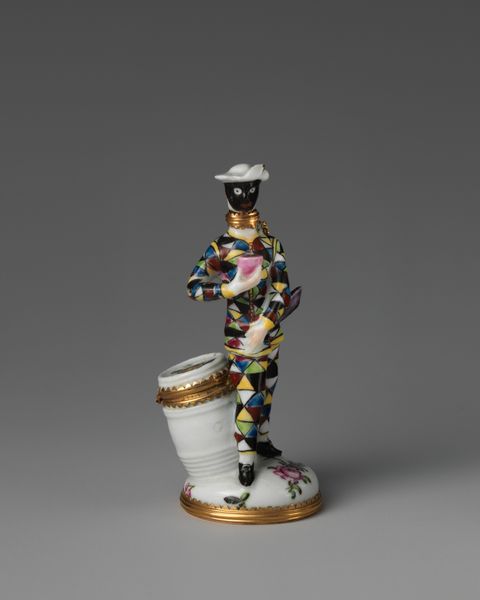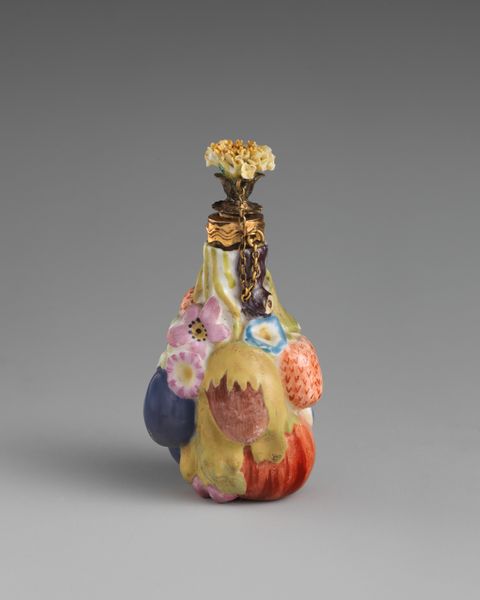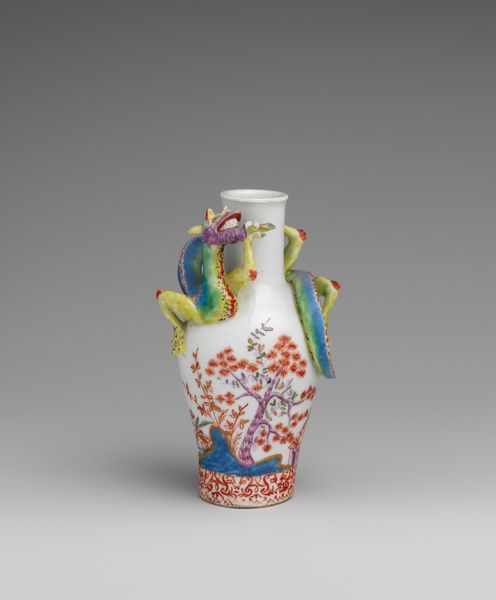
ceramic, porcelain, sculpture
#
portrait
#
head
#
ceramic
#
flower
#
porcelain
#
sculpture
#
decorative-art
#
rococo
Dimensions: Overall: 3 1/4 × 2 in. (8.3 × 5.1 cm)
Copyright: Public Domain
Curator: What an intriguing piece. We’re looking at a porcelain “Janus-headed bottle” created between 1755 and 1765 by the Chelsea Porcelain Manufactory. Editor: It's immediately striking. The black mask against the pale porcelain face creates an air of mystery and almost a sense of unsettling playfulness. Is this supposed to be a perfume bottle? Curator: Most likely. The attention to detail is incredible when we consider the craftsmanship involved. Notice the Rococo style floral adornments intertwined with the coiffure, as well as the precisely formed gilded stopper. And all created from ceramic! The entire method of production, from clay selection to firing to glazing, demonstrates a sophisticated level of material knowledge and labor division. Editor: Agreed, it is wonderfully produced. However, it also feels very symbolic. The Janus figure, referencing the Roman god of duality, coupled with the mask, could represent the dual nature of identity during this time. The performance of social roles within a highly stratified society and perhaps hints at subversive play amidst restrictive conventions. Curator: That’s an interesting reading. These factories employed highly specialized laborers; some dedicated solely to painting flowers, others just to gilding. The socio-economic implications are crucial to understand. Who were these artisans? What were their working conditions? It brings light to the social fabric that allowed such beautiful objects to be conceived. Editor: Precisely. And thinking of labor and social conditions of that period, were these masking rituals open to everyone? Was this porcelain created only for wealthy aristocrats, allowing them to play with identity, to obfuscate through the performance of race and gender? What were the limits and the social risk? Curator: Considering the material properties of porcelain—its delicate yet enduring nature—one could say it represents a paradox itself, a mirror of societal complexities we still struggle with today. Editor: So true. It really makes one ponder what other stories lie beneath its gilded surface. Curator: Indeed, it's far more than just a decorative piece. Editor: Absolutely; I see layers upon layers revealed to us even centuries later.
Comments
No comments
Be the first to comment and join the conversation on the ultimate creative platform.

